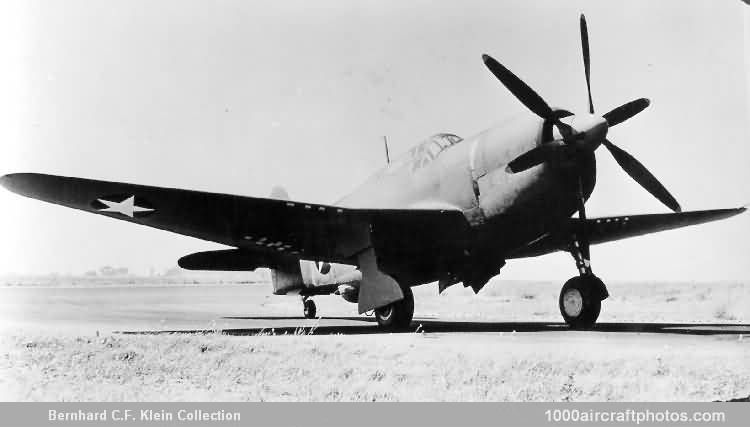Curtiss's proposals were submitted on April 29, 1941, and these provided for the design and construction of two prototypes, the XP-62 and the XP-62A, the first to be delivered within fifteen months and the second within eighteen months. Three months later, on August 2, 1941, revised specifications for the XP-62 were submitted for approval, the principal changes being a reduction in maximum speed to 448 mph (721 kmh) with the eight-cannon armament, and an increase of 1,537 lb (697 kg) in loaded weight. A mockup inspection was held during the following December and no fewer than ninety changes were recommended.
When the status of the XP-62 project was reviewed on January 1, 1942, however, it was recommended that the loaded weight be reduced from 15,568 lb (7,062 kg) to 14,000 lb (6,350 kg) by a restudy of the structure, the elimination of four cannon, and the removal of the airscrew anti-icing equipment. Proposals were submitted on January 13, 1942 for 100 P-62 fighters, the first machine to be delivered in May 1943, production rising to thirty machines per month by the following October.
A letter contract for 100 P-62s was approved on May 25,1942, but on July 27th the contract was terminated as it would have affected deliveries of urgently needed Curtiss-built P-47G Thunderbolts. At this time, the XP-62 (s/n 41-35873) was 75-80% complete and was scheduled to fly in the April of the following year.
One of the most interesting features of the XP-62 was its pressure-cabin supercharger equipment, one of the first such installations in an interceptor fighter, but delays in the delivery of the pressure cabin and necessary modifications to the 2,300 hp Wright R-3350-17 Cyclone eighteen-cylinder air-cooled engine resulted in the first flight test being delayed until July 21,1943.
The portion of the contract covering the XP-62A was cancelled on September 21, 1943, and a limited amount of flight testing had been conducted with the XP-62 by February 1944 when it was decided to install the pressure cabin for general testing and development work. This cabin had not been fitted for the initial trials, but owing to its low priority, work proceeded slowly, and in the autumn of 1944 the aircraft was scrapped without further flight testing.
The XP-62 was not flown sufficiently to secure full performance characteristics, and those quoted in the following specification are estimates."
Span: 53 ft 7.75 in (16.35m)
Length: 39 ft 6 in (12.04 m)
Height: 16 ft 3 in (4.95m)
Wing area: 420 sq.ft (39.02 sq.m)
Weight empty: 11,773 lb (5,340 kg)
Loaded weight: 14,660 lb (6,650 kg)
Max speed: 448 mph (720 kmh) at 27,000 ft (8,230 m)
Climb: to 15,000 ft (4,572 m) 6 min 54 sec
Service ceiling: 35,000 ft (10,668 m)
Range: 1,500 mls (2,414 km)
